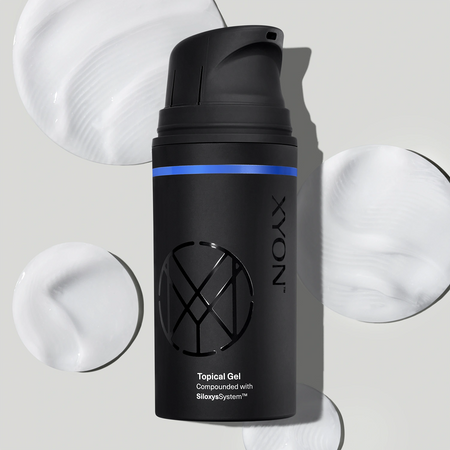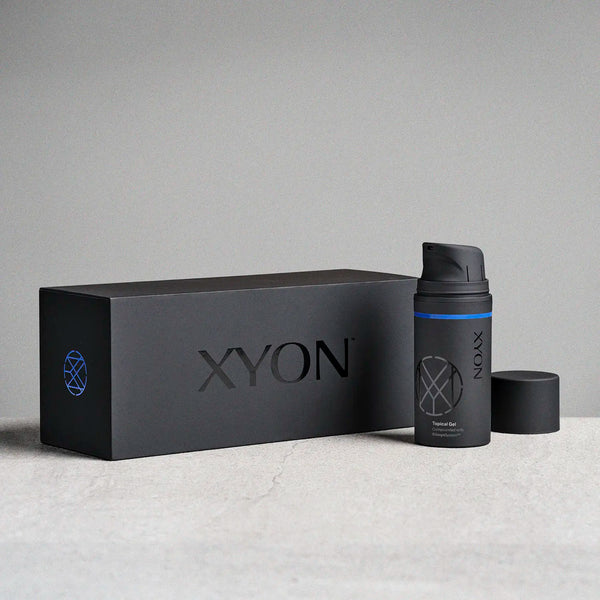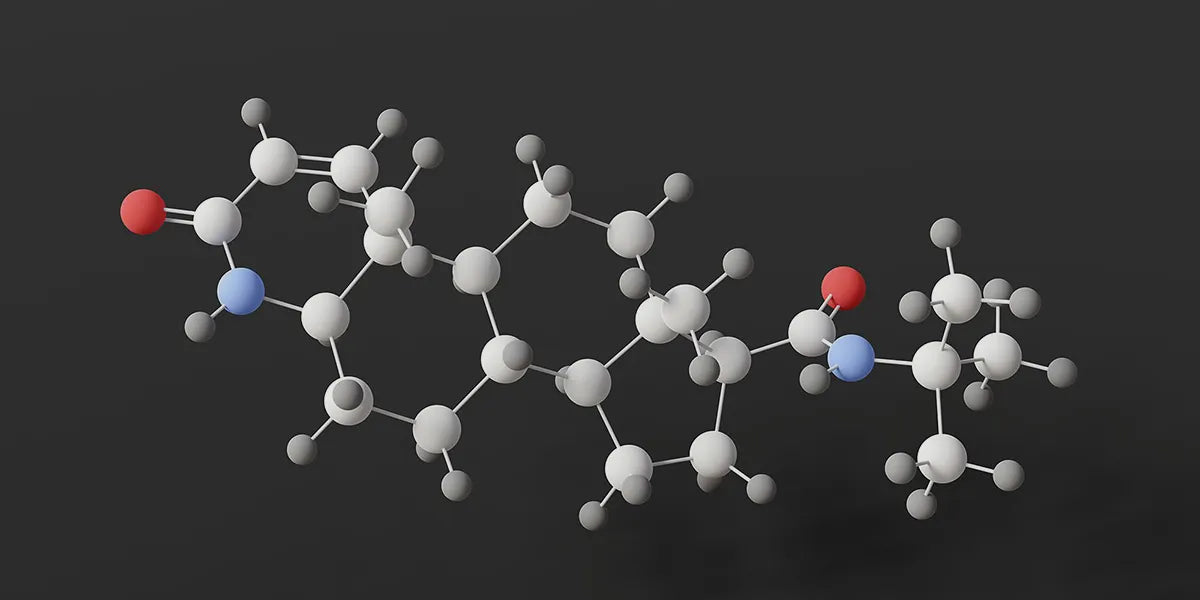A medication's mechanism of action refers to the way it exerts its effects on the body. In the case of finasteride, often prescribed to treat male androgenetic alopecia, its mechanism of action is closely related to the structure of the drug molecule itself. In this article, we'll provide a run down of what finasteride is, how it works and how finasteride's mechanism of action (MOA) affects hair follicles and the prostate gland differently.
What is finasteride?
Finasteride is a 5-alpha reductase inhibitor. These drugs work by blocking the action of an enzyme called 5-alpha reductase, which comes in two forms (type I and type II). Finasteride specifically inhibits the type II form of the enzyme.
Normally, when the male sex hormone testosterone encounters 5-alpha reductase, it’s converted into dihydrotestosterone (DHT). 5-alpha reductase inhibitors prevent this from happening, which results in a reduction in DHT concentrations.
Our unique topical formula harnesses the power of a clinically proven treatment in an easy-to-use gel.


Maximize the benefits of finasteride.
Finasteride: How does it work?
How does finasteride actually treat hair loss? Finasteride’s mechanism of action (MOA) involves the drug molecules binding to the 5 alpha-reductase enzyme and physically preventing testosterone from attaching to the enzyme and being transformed into DHT.
This phenomenon is also referred to as competitive enzyme inhibition. Finasteride molecules are similar in structure to testosterone. Both can make contact with the same binding site on the 5-alpha reductase enzyme, but if finasteride binds first, the enzyme is essentially inactivated and can’t make any more DHT.

Finasteride mechanism of action: Hair loss
One of the key players in androgenetic alopecia is a hormone called DHT. It's produced when the 5-alpha reductase enzyme converts testosterone into DHT. Studies have shown that men experiencing androgenetic alopecia have higher levels of DHT in their scalps (Dallob et al., 1994). Men born with a deficiency of type II 5-alpha reductase and therefore, produce no or little DHT, don’t develop pattern hair loss. So it's pretty clear that DHT is a big part of the problem. Fortunately, the mechanism of action of finasteride directly targets DHT levels.
High amounts of DHT at the scalp can trigger a process called follicular miniaturization, often referred to as follicular shrinkage. The hormone causes the hair follicle to physically change shape, rendering it less able to produce fully-formed terminal hairs and also derailing the natural hair growth cycle. Men who have a genetic predisposition to balding are more likely to be affected.
The effects of the finasteride MOA on DHT concentrations can be dramatic. Studies of the impact of oral finasteride on serum (blood) levels of DHT in balding men have shown a 70% reduction in DHT after approximately a month of treatment (Clark et al., 2004). Other clinical investigations into the effects of finasteride in treating benign prostatic hyperplasia (BPH), have observed reductions in intra-prostatic DHT levels by 80% (Kim et al., 2018). This data further supports that finasteride works to reduce DHT production in a highly specific way.
Finasteride mechanism of action: Prostate health
Finasteride is also used to treat a condition called benign prostatic hyperplasia (BPH), or an enlarged prostate. DHT plays an important part in the development and growth of prostate gland cells. Taking finasteride lowers DHT levels in the prostate, thereby causing a reduction in the size of the prostate gland and offering some relief from the symptoms of BPH.
One 36 month long study of finasteride treatment in men with BPH observed a 27% reduction in prostate gland volume (Stoner et al., 1994). A separate 4-year long study that compared finasteride treatment to placebo found that the finasteride-treated group experienced an 18% reduction in prostate volume versus the placebo group, which actually saw a 14% increase in prostate size (McConnell et al., 1998).
There is some data suggesting that a reduction in prostate volume is accompanied by lower prostate specific antigen (PSA) levels. PSA is normally produced by prostate gland cells and can be used to help diagnose both BPH and prostate cancer. One trial in particular found that finasteride led to a 50% reduction in blood levels of PSA after about a year of treatment (Gormley et al., 1996).
What this tells us is that taking finasteride could indirectly lead to lowered PSA levels, which could have implications for men with a history or family history of prostate cancer. So, what should you do? It’s important that if you’re considering taking finasteride, that you talk to your doctor about your prostate cancer risk. They’ll take the appropriate measures to ensure careful monitoring of PSA levels before and during treatment.
Finasteride mechanism of action: Takeaway
The mechanism of action of finasteride involves reducing DHT production. This can have dramatic therapeutic effects on androgen-sensitive tissues such as the hair follicles and prostate gland. Finasteride is a competitive inhibitor of the type II form of the 5-alpha reductase enzyme, which means that the drug molecules physically prevent testosterone from making contact with the enzyme. With consistent dosing, finasteride levels reach a point where DHT levels are sufficiently suppressed and hair follicle miniaturization is halted.




